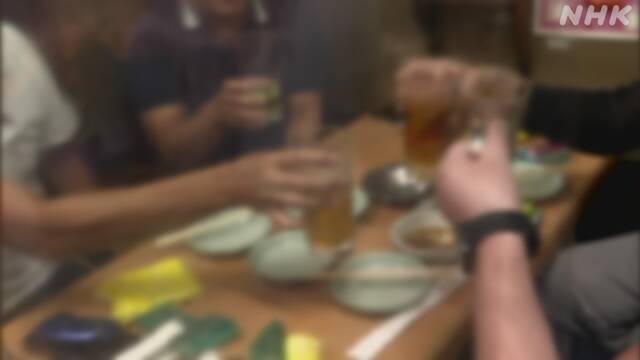An expert meeting of the Ministry of Health, Labor and Welfare held on the 1st showed data on the number of people in major downtown areas nationwide until August 29.
In Tokyo, the number of people at night has increased rapidly since the beginning of the Obon festival, and there is concern that the infection will spread again.
This data was presented by the Tokyo Metropolitan Institute of Medical Research, Social Health Medicine Research Center at an expert meeting of the Ministry of Health, Labor and Welfare on the 1st.
Based on the location information of mobile phones obtained in a form that does not identify individuals, the number of people who have stayed for 15 minutes or more outside of work or home is defined as the "resident population" of 500 in the major downtown areas of each municipality. It is analyzed hourly with a metric mesh.
This time, all the data analyzed up to August 29th.
Capital Area
▽ In Tokyo, analysis is based on data from seven downtown areas such as Shinjuku, Shibuya, and Roppongi.
The population staying at night has increased sharply for the second consecutive week since the end of the Bon Festival, and is approaching the high level before the declaration of emergency was issued.
Especially in the time zone from 10 pm to midnight when the risk of infection is high, it increased by 24.7% in the two weeks after the Bon Festival, which is almost the same speed as the end of the Golden Week holidays. If it continues, the infection may spread again.
A government subcommittee is calling for a 50% reduction in Tokyo's population compared to the first half of July, just before the state of emergency, but the nighttime population has only decreased by 19.1% since before the declaration. increase.
▽ In Chiba Prefecture, the population staying at night and daytime has increased sharply for two consecutive weeks since the end of the Obon festival, and is almost returning to the level before the declaration.
There is concern that the infection will spread again.
▽ Kanagawa Prefecture has maintained a level close to the lowest level during the 4th wave, although the population staying at night is gradually increasing.
The daytime population has been increasing for the second straight week.
▽ In Saitama Prefecture, the number of people staying at night has not increased significantly since the end of the Obon festival, and has remained at a low level.
The daytime population is also flat.
Kansai
▽ In Osaka Prefecture, the population staying at night and daytime has increased for two consecutive weeks since the end of the Obon festival, and has remained at a high level.
During the period from 10 pm to midnight, when the risk of infection is high, the level is returning to the pre-declaration level, and there are concerns about the impact on the future infection situation.
▽ In Hyogo Prefecture, the population staying in Hyogo Prefecture stopped declining at the end of the Obon festival both at night and during the daytime, but it did not start to increase and remains at a low level.
▽ In Kyoto Prefecture, the population staying at night remained at a high level compared to the lowest level at the time of the 4th wave, but it has started to increase in the last week after becoming a target area for emergency declaration. ..
Kyushu-Okinawa
▽ In Fukuoka Prefecture, the resident population started to increase after the Bon Festival, but in the last week after the state of emergency was declared, it increased slightly at night and decreased slightly during the day.
▽ In Okinawa Prefecture, the resident population decreased after the Bon Festival, but it has started to increase again in the last week both at night and during the day.

